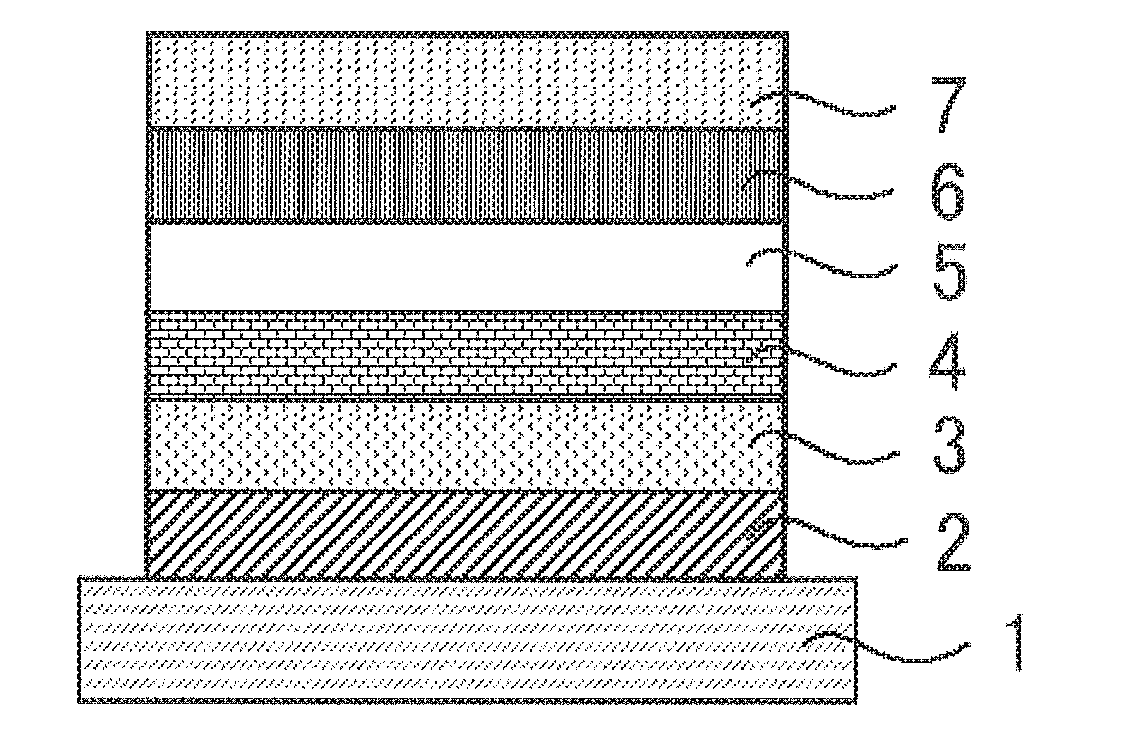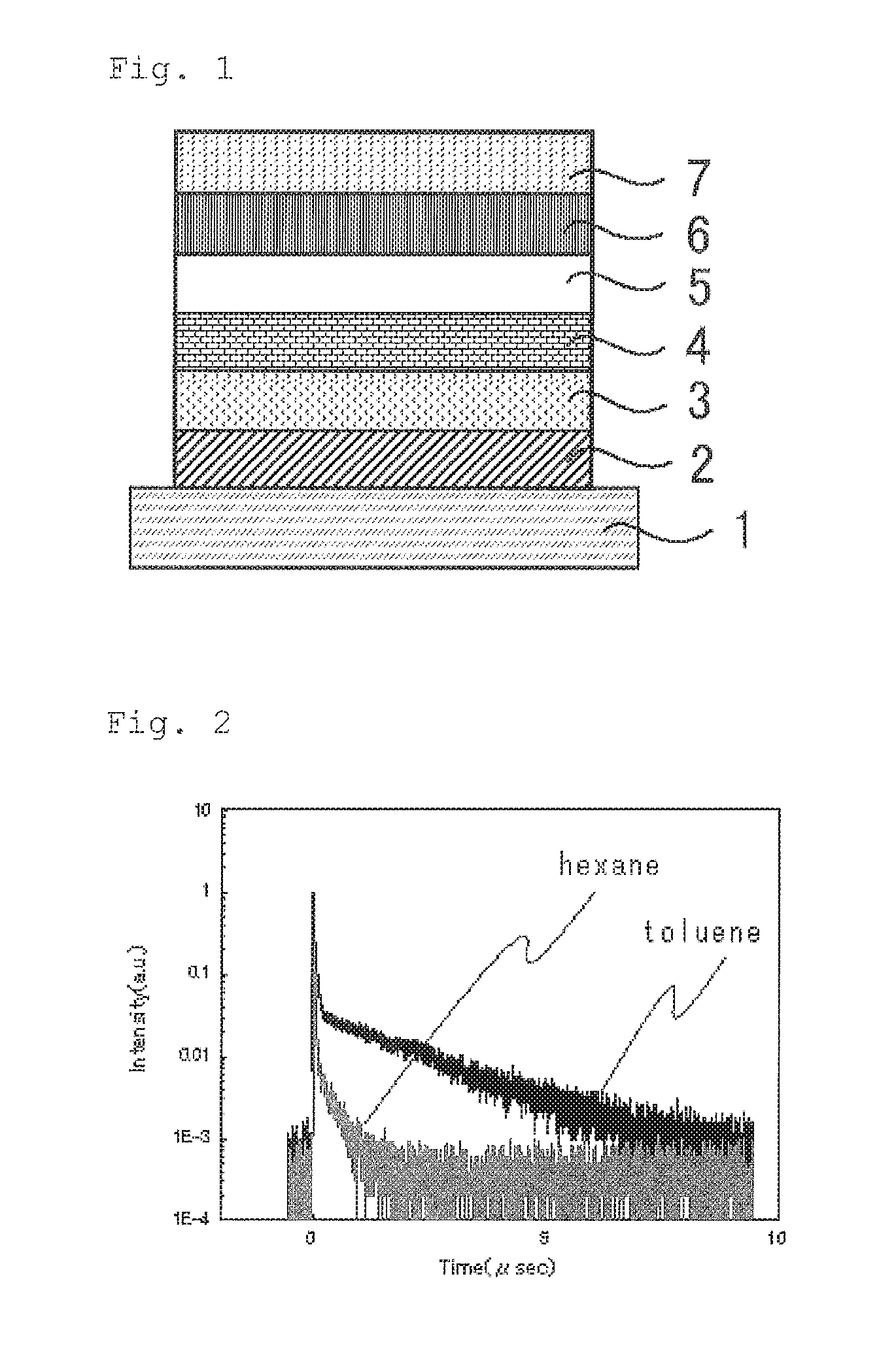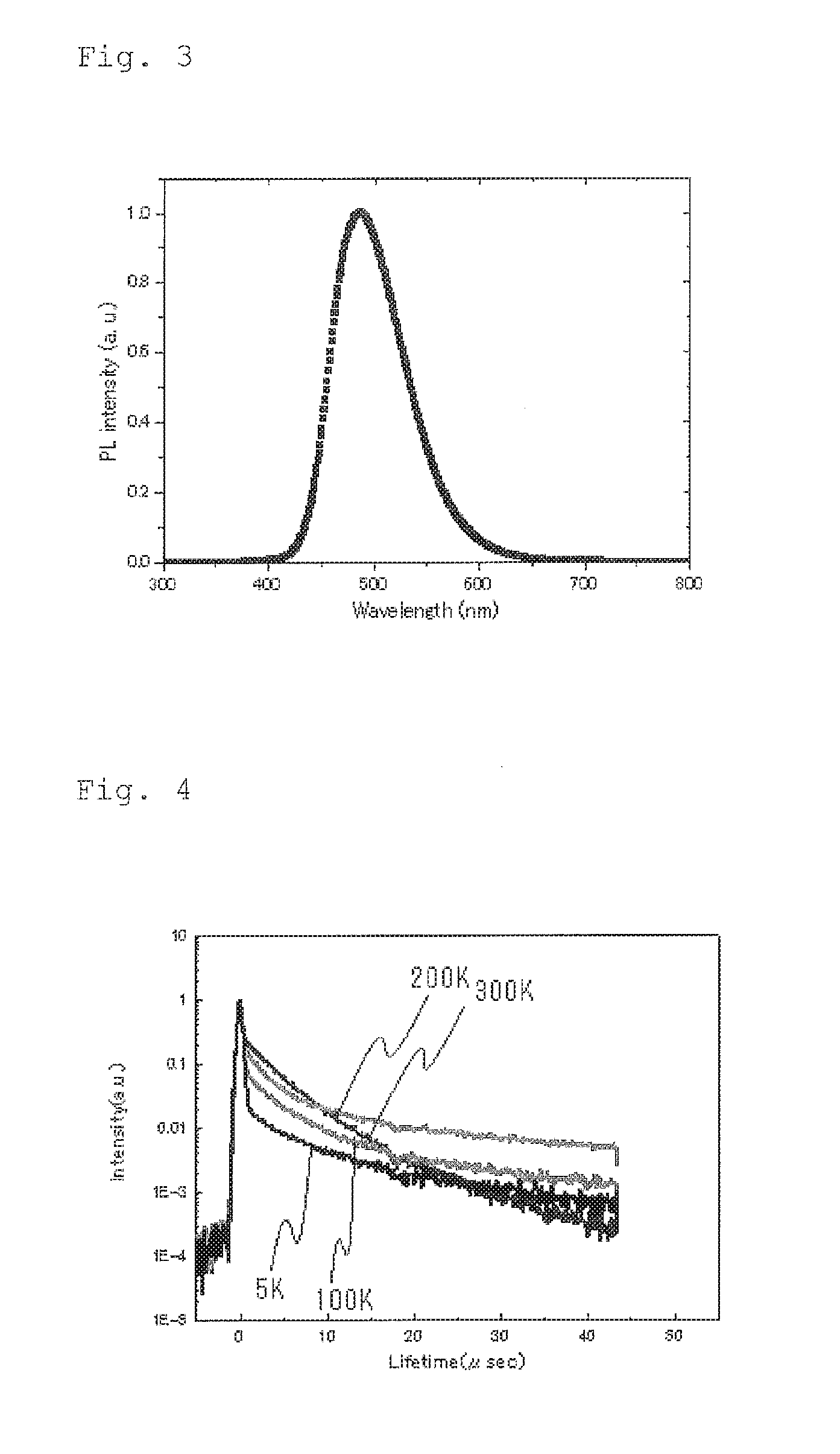Light emitting material, delayed fluorescent emitter, organic light emitting device, and compound
a light emitting device and fluorescent technology, applied in the direction of organic chemistry, thiazine dyes, acridine dyes, etc., to achieve excellent light emission characteristics
- Summary
- Abstract
- Description
- Claims
- Application Information
AI Technical Summary
Benefits of technology
Problems solved by technology
Method used
Image
Examples
synthesis example 1
Synthesis of Compound 1
[0146]The compound 1 was synthesized according to the following procedures.
[0147]In a three-neck flask equipped with a Dean-Stark trap, phenol (12.35 g, 131.25 mmol), K2CO3 (34.55 g, 250 mmol), N,N-dimethylformamide (125 mL) and toluene (125 mL) were charged, and refluxed in a nitrogen atmosphere for 4 hours to perform dehydration until no further water was formed from the reaction system. Thereafter, 100 mL of toluene was removed with the Dean-Stark trap.
[0148]After returning to room temperature, 4-bromo-2-fluorobenzonitrile (25.0 g, 125 mmol) was added thereto, and the mixture was refluxed in a nitrogen atmosphere for 4 hours. After completing the reaction, the solution was diluted by adding toluene (200 mL) thereto, and then filtered with Celite. The solution was rinsed twice with water with a separating funnel, dried over anhydrous magnesium sulfate, and filtered. The product was purified by silica gel chromatography (mobile phase: toluene / ethyl acetate=9 / ...
synthesis example 2
Synthesis of Compound 4
[0157]The compound 4 was synthesized according to the following procedures.
[0158]In a three-neck flask equipped with a Dean-Stark trap, 3-bromophenol (22.72 g, 131.3 mmol), K2CO3 (34.55 g, 250 mmol), N,N-dimethylformamide (130 mL) and toluene (130 mL) were charged, and refluxed in a nitrogen atmosphere for 4 hours to perform dehydration until no further water was formed from the reaction system. Thereafter, 100 mL of toluene was removed with the Dean-Stark trap.
[0159]After returning to room temperature, 4-bromo-2-fluorobenzonitrile (25.0 g, 125 mmol) was added thereto, and the mixture was refluxed in a nitrogen atmosphere for 4 hours. After completing the reaction, the solution was diluted by adding toluene (200 mL) thereto, and then filtered with Celite. The solution was rinsed twice with water with a separating funnel, dried over anhydrous magnesium sulfate, and filtered. The product was purified by silica gel chromatography (mobile phase: toluene / ethyl acet...
synthesis example 3
Synthesis of Compound 2
[0171]The synthesis was performed according to the following reaction scheme in the same manner as is the compound 1 in Example 1 (yield: 97%).
[0172]In a two-neck flask, the compound 1b (0.83 g, 3 mmol), 9,9-dimethyl-10-(4-(4,4,5,5-tetramethyl-, 3,2-dioxaborolan-2-yl)phenyl)-9.10-dihydroacridine (1.36 g, 3.3 mmol), 3 mL of a 2M aqueous solution of potassium carbonate, 6 mL of 1,2-dimethoxyethane, 6 mL of toluene, and tetrakis(triphenylphosphine) palladium (104 mg, 0.09 mmol) were charged, and refluxed in a nitrogen atmosphere for 48 hours.
[0173]After completing the reaction, the reaction solution was extracted with dichloromethane with a separating funnel, dried over anhydrous magnesium sulfate, then filtered, and concentrated. The product was purified by silica gel chromatography (mobile phase: dichloromethane). The product was further rinsed with 30 mL of an ethyl acetate / n-hexane mixed solvent (1 / 1) under application of ultrasonic wave for 5 minutes, and th...
PUM
| Property | Measurement | Unit |
|---|---|---|
| temperature | aaaaa | aaaaa |
| work function | aaaaa | aaaaa |
| sheet resistance | aaaaa | aaaaa |
Abstract
Description
Claims
Application Information
 Login to View More
Login to View More - R&D
- Intellectual Property
- Life Sciences
- Materials
- Tech Scout
- Unparalleled Data Quality
- Higher Quality Content
- 60% Fewer Hallucinations
Browse by: Latest US Patents, China's latest patents, Technical Efficacy Thesaurus, Application Domain, Technology Topic, Popular Technical Reports.
© 2025 PatSnap. All rights reserved.Legal|Privacy policy|Modern Slavery Act Transparency Statement|Sitemap|About US| Contact US: help@patsnap.com



